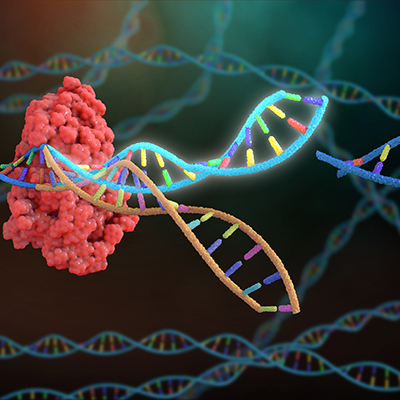October 7, 2022 -- Researchers at Northwestern University contend that by combining nanostructures called spherical nucleic acids (SNAs) with CRISPR-Cas9 systems, the types of cells and tissues that the gene-editing machinery can be delivered to may be "dramatically" expanded.
In a paper published October 6 in the Journal of the American Chemical Society, the researchers say their findings "point toward a way of significantly broadening the scope of use and impact of CRISPR-Cas9 genome editing systems."
CRISPR-Cas9 was a major step forward in gene editing. However, the impact of the technology has been limited by the lack of delivery vehicles to transport the editing components to tissues and across cell membranes. Researchers identified SNAs as a possible way to tackle the delivery limitation, which have yet to be explored as a means of facilitating genome editing.
Northwestern's Chad Mirkin, PhD, a nanotechnology expert known for his discovery and development of SNAs, explained how the use of these structures -- typically comprised of spherical nanoparticles densely covered with DNA or RNA -- stand to expand the use of CRISPR-Cas9 by improving its delivery.
"These novel nanostructures provide a path for researchers to broaden the scope of CRISPR utility by dramatically expanding the types of cells and tissues that the CRISPR machinery can be delivered to. We already know SNAs provide privileged access to the skin, the brain, the eyes, the immune system, the GI track, heart, and lungs. When this type of access is coupled to one of the most important innovations in biomedical science in the last quarter-century, good things will follow," Mirkin said in a statement.
Mirkin and his collaborators attached DNA strands to the surface of Cas9 to create a new type of SNA. The radial organization of the DNA on the surface of the Cas9 protein is designed to improve cellular update, enabling the constructs to get the gene-editing machinery into cells without electroporation or transfection agents. Preloading the SNAs with RNA equipped them to perform gene editing.
Other design decisions sought to help the SNAs navigate the compartmental barriers of the cell. The team added one type of peptide, GALA, to part of Cas9 to enable endosomal escape and other peptides, nuclear localization signals, to a different part of the protein to maximize nuclear localization and editing efficiency.
The goal was to create an SNA that crosses the membrane by endocytosis, escapes the endosome, and then enters and edits the nucleus. In the study, the SNAs achieved genome editing efficiency between 32% and 47% across several human and mouse cell lines. These constructs were stable against protease digestion under conditions that fully degrade the Cas9 protein when not protected as part of an SNA.
The work builds on years of research into SNAs, which are now being evaluated as therapeutics in six clinical trials that are targeting indications including brain and skin cancer.
Copyright © 2022 scienceboard.net








